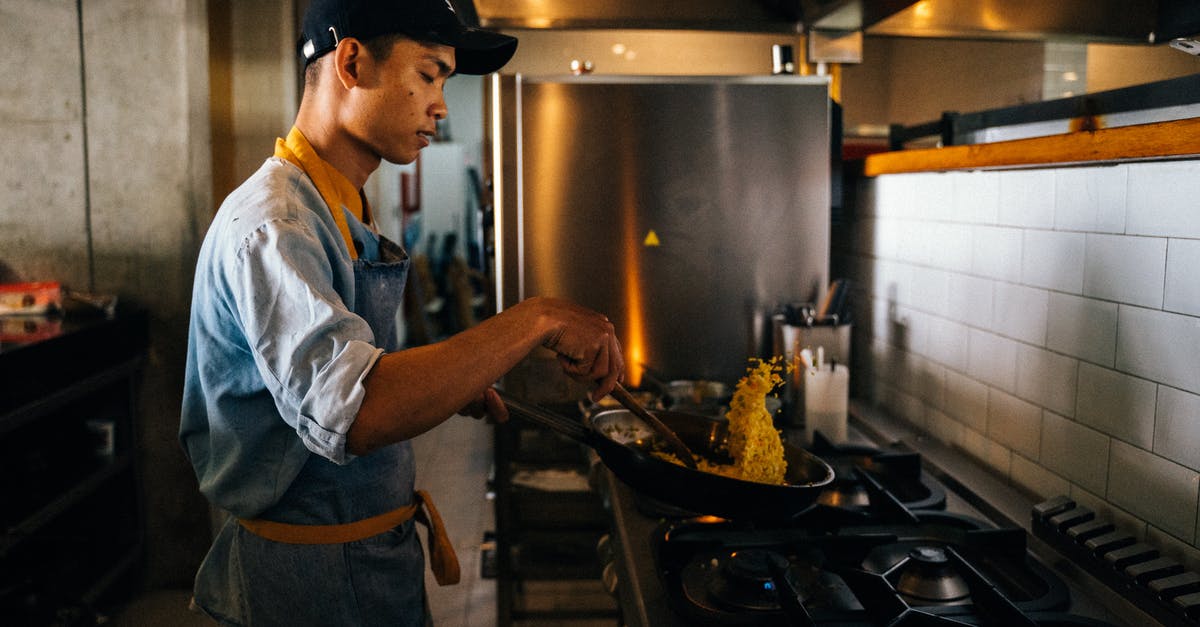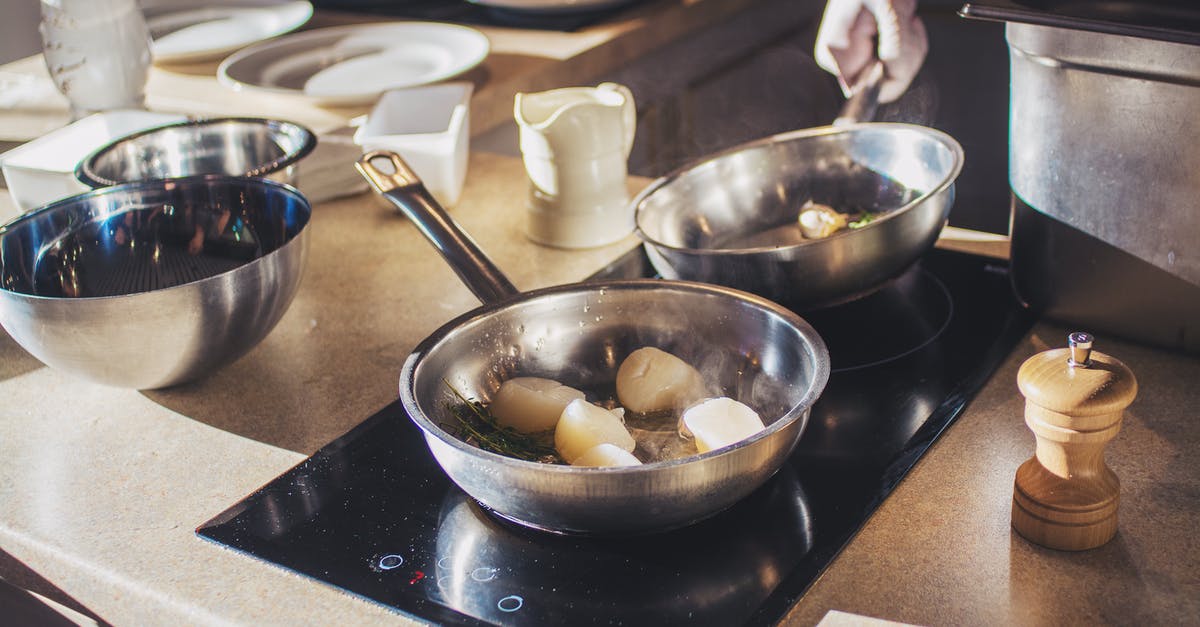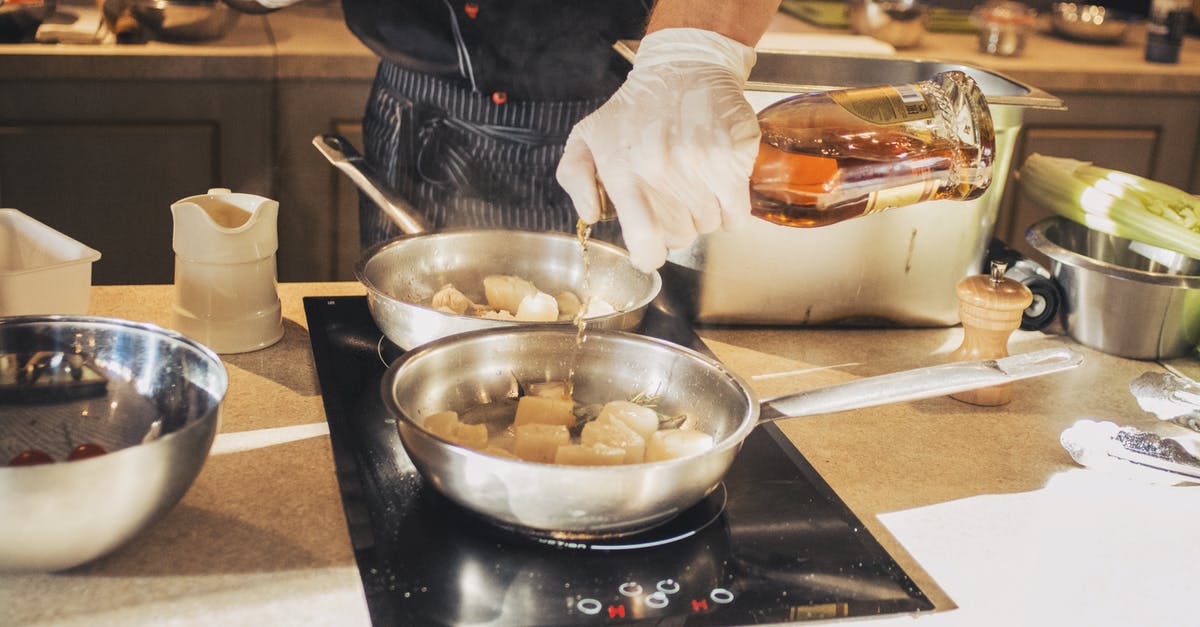Chef at restaurant seemed to be using really flimsy pans

I was at a restaurant and sat at the chef's table where I could see the chef making the entrees.
He seemed to be using thin pans that were battered and dented. I couldn't tell what material they were (either alu or steel; they weren't copper), but they were thin and/or soft enough to be battered and dented.
Still, he was able to cook lamb, chicken, duck, and salmon without any burning or sticking. The pans were heated very hot and well oiled.
If anything, the thinness of the pans seemed to make heat transfer even easier.
This caused me to come home and look a bit askance at my heavy, all-clad, triple-ply cookware.
Are thin-pans totally usable and it's just all in the chef? This seems to upend my purchasing habits entirely.
Best Answer
Are thin-pans totally usable and it's just all in the chef?
Yes, and no.
As usual, skill matters more than tool choice. A bad cook won't turn out good food with a great pan. A great cook with a bad pan will usually outcook an intermediate cook with a great pan. But the same intermediate cook will turn out better food with a great pan than with a terrible pan.
The difference the pan makes is mostly the evenness of heating, and somewhat in the food layer which gets heated. A professional cook typically pays more attention to the food and knows how to react to uneven heating, e.g. by stirring/flipping at the best moment. The pan in the professional kitchen is also better preheated, instead of being taken out for the current dish only. In some parts of Europe, the home cook also cooks on a resistive stove, so each dent or warp is very problematic, unlike cooking on gas.
Then there come the cooking techniques. The thin pan limits you there. It is well suited for standard frying and stir frying. That is, you use enough oil and keep the food moving. Many home cooks love to apply an almost imperceptible amount of oil, which means that the pan's heating evenness is much more important. Also, if you want to leave your food sitting there, an overheated pan (or a pan with overheated spots) will burn it.
There are also results which I think not even a pro can achieve with thin steel pans. For example, I have never seen crepes get a beautiful even dark color when made on a thin alu pan, while mine get it automatically in the cast iron at home.
In the end, your purchasing habit is your personal decision. A thin pan is not equivalent to a thick pan in handling and outcome, and it is up to you to choose what tradeoffs you are willing to make.
Pictures about "Chef at restaurant seemed to be using really flimsy pans"



Why do chefs shake pans?
You know the move: a flick of the wrist, food suspended midair, then a soft landing back in the pan. The pan-flip serves a simple purpose, and it's not (just) to make cooks look cool. It ensures that food cooks evenly over high heat, it's what marries pasta to sauce\u2014and it does it all sans pesky spoons.What type of pan do most chefs use?
The most common types of fry or saute pans used by professional chefs are: Aluminum \u2013 Stainless Steel \u2013 Copper \u2013 Cast Iron and each has it's own particular characteristics and advantages. Each one also has at least one disadvantage.Do chefs use non stick pans?
In hospitality there's no mucking around with sensitive pots and pans. They go from a ripping hot stove to the sink over and over, every service. This is why pans with a friable coating are rare and chefs mostly stick to steel and cast-iron (the original nonstick).Why do chefs use carbon steel pans?
A carbon-steel skillet can brown food just as deeply and evenly as cast iron. It also has two advantages: It heats up more quickly, and its lighter weight makes it easier to handle.Busy Kitchen at 3 Michelin Star restaurant Atelier, Munich - Germany
More answers regarding chef at restaurant seemed to be using really flimsy pans
Answer 2
Good answers with science.
I'll reply with operations perspective.
Things move quick in a restaurant. You want to get the most out of each employee and each square foot of equipment space and also please the customer with timely service.
Faster cooking while retaining quality is the goal. Thin pans and very high BTU stove top, and things cook quick. That Chef (more likely a line cook in this case) was probably hustling, like a well trained multi-tasking athlete to keep up with his orders. A home cook doesn't need to operate this way.
Note: you can be sure that there are also high quality pans in the kitchen as well. They would be used by the Sous Chef and Prep Cooks.
Your pans are perfect for you.
(I remember the cooks doing allot of items in pie tins, using tongs as a handle)
Answer 3
It depends on the heat source and how it is used - A strong gas or induction stove can be used to resupply heat very rapidly when needed - but that will be something the cook has to manage. A cast-plate electric or coal stove offers a thermal mass to store heat so a pan does not need to bring another thermal mass. A lower power stove, or one that depends mostly on radiation for heat transfer (electric open coil, glass ceramic, halogen), will struggle to keep a thin pan evenly heated. If the pan goes in an oven, the speed with which it assumes oven temperature varies on thickness.
Sources: Stack Exchange - This article follows the attribution requirements of Stack Exchange and is licensed under CC BY-SA 3.0.
Images: Tanya Gorelova, Anna Tarazevich, Tanya Gorelova, Tanya Gorelova
